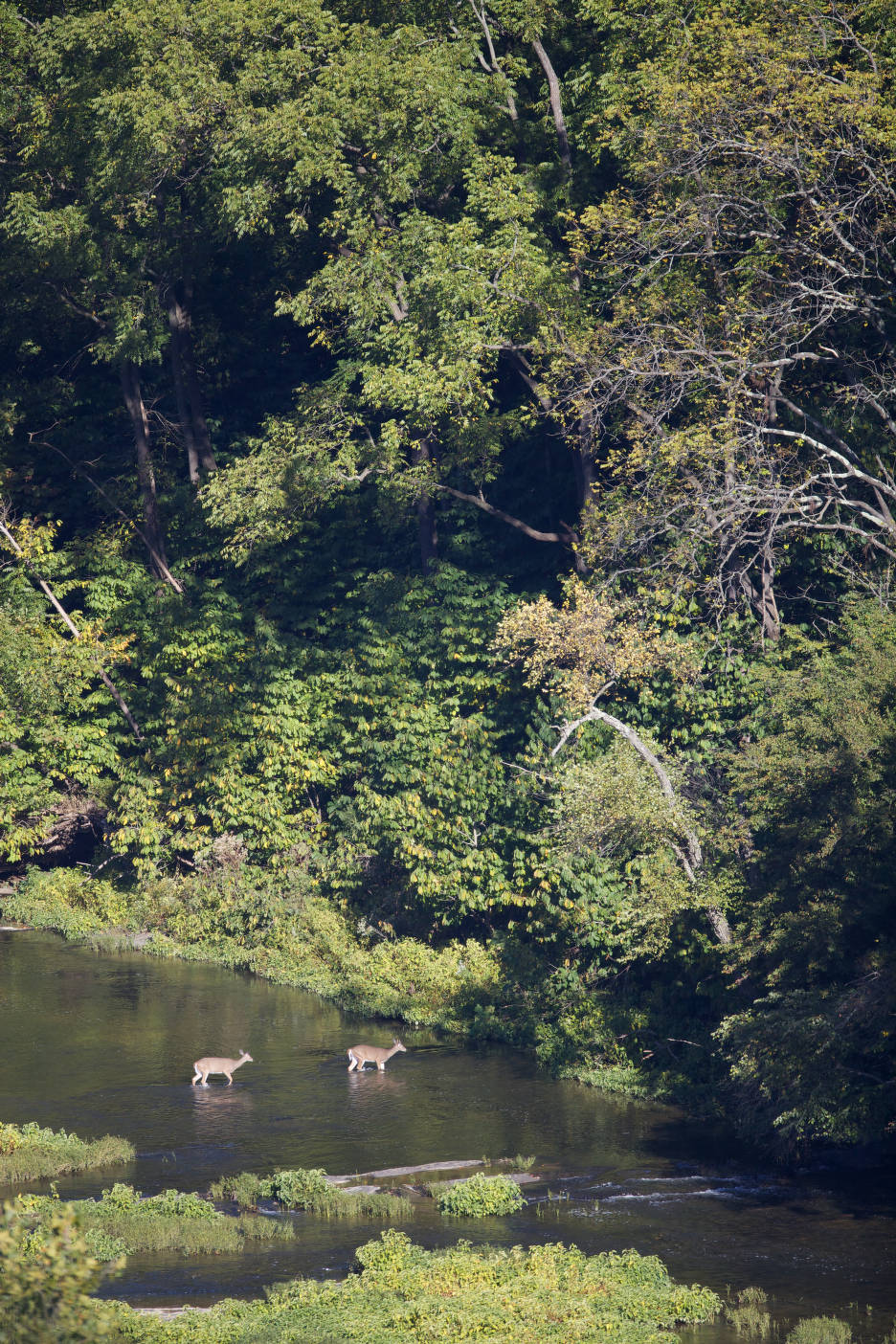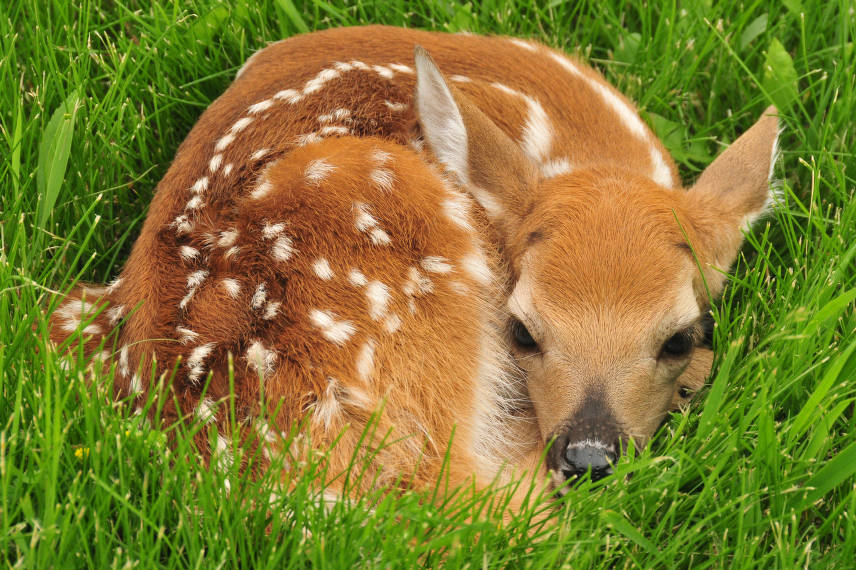
By Ace Johnson
On November 9, 2021, the USDA released information stating that COVID-19 had been found in white-tailed deer. But Mississippi State University experts say that there is no current cause to worry about deer in the immediate area.
Having still not fully resolved the zoonotic origins of COVID-19, learning about new hosts and potential new reservoirs can be concerning. Natural infections of the virus have been seen in many domestic and wild species under human care, such as dogs, cats, ferrets, big cats, western lowland gorillas, Asian small-clawed otters and minks, as reported by the Nature journal. Through identification of angiotensin-converting enzyme 2 (ACE2) – the SARS-CoV-2 receptor – scientists could identify which animals share a high degree of similarity with that of humans and predict which species are most susceptible to the virus, including species such as hamsters, primates, North American raccoons and several species of deer. White-tailed deer are also one of several species capable of intraspecies SARS-CoV-2 transmission, as well as vertical transmission.
Even with the virus spreading quickly within white-tailed deer populations, there is very little evidence to suggest that there is any spillback into human populations, as noted in the Nature journal study: “No spillback to humans was observed, but these findings demonstrate that SARS-CoV-2 viruses have been transmitted in wildlife in the USA, potentially opening new pathways for evolution.”
Reservoirs of SARS-CoV-2, an Omicron-like variant of the virus that causes COVID-19, has been found in populations of white-tailed deer in Ontario, Canada and the northern states of the U.S. Researchers in Canada did a multidisciplinary research collaboration surveilling Canadian wildlife, and thus finding a new, and very divergent, lineage of SARS-CoV-2 that contains 76 mutations that distinguish it from the original strain first discovered in Wuhan, China. These mutations include 37 formerly correlated with animals but 23 of which were not previously accounted for in deer.
Around the time of this study, the strain being carried by the deer was found in a human from the same area who was confirmed to have come in contact with deer, but this is speculated to be more of an outlier than a foreboding of some kind of reinfection in human populations.
According to a study conducted by the USDA’s Animal and Plant Health Inspection Service, certain deer populations in New York, Michigan, Illinois and Pennsylvania have already been exposed to this same variant. Having such a large number of deer already exposed to the variant is a little concerning since there are approximately 30 million deer in the U.S. and a significant proportion of that number are in close contact with people.
After collecting 481 samples between January 2020 and March 2021 to test for antibodies, the results of APHIS’ study showed that only a small number of deer within the exposed populations were actively infected and almost none showed signs of clinical illness.
APHIS is continuing to keep an eye on the white-tailed deer population, and other wildlife, by working closely with federal and state partners. A provision on agriculture pandemic response is included in the American Rescue Plan Act of 2021. APHIS has been selected as the lead agency for amassing and enhancing the American animal health system to understand and combat emerging and zoonotic diseases, including SARS-CoV-2, in susceptible animals like the white-tailed deer.
Another study by Texas A&M University, revealed that more than 90% of the College of Veterinary Medicine and Biomedical Sciences’ captive deer tested positive for COVID-19, suggesting deer-to-deer transmission.
This finding is corroborated by the observations and documentations of the Nature journal on deer populations in northeast Ohio where they did nasal swabs in six separate locations between January and March 2021. They found that more than one-third of the deer (129 out of 360) were infected with three SARS-CoV-2 lineages (B.1.2, B.1.582 and B.1.596). It is thought that the virus came from humans, as the B.1.2 viruses were quite prevalent at the time, in four of the locations then transferred from one deer herd to the next.
The Texas A&M University study also suggests that this variant in the white-tailed deer has shifted its way down from the northern half to the southern half of the United States.
This begs the question for the residence of the Starkville and the surrounding areas: Has this strain of COVID-19 reached the borders of Mississippi?
Steve Damarais, a professor at the Department of Wildlife, Fisheries and Aquaculture at Mississippi State University studying the white-tailed deer population, claims to have seen no real evidence that the deer around Mississippi have contracted this disease, but this does not mean the deer aren’t carriers.
“I have not seen any evidence of this in deer, but I would not expect any because the disease appears to be asymptomatic or at least minimally damaging to the deer,” said Damarais.
As stated previously, white-tailed deer are a largely unaffected carriers of the virus, making it practically impossible to pinpoint which deer have or have not been infected without running tests.
 COVID-19 in deer was actually discovered by accident, according to Kevin Hunt, an MSU professor of human dimensions and coordinator of WFA graduate studies. It was discovered that deer had contracted COVID-19 while searching for deer that were infected with Chronic Wasting Disease (CWD), which is “a prion disease that affects deer, elk, reindeer, silka deer and moose” in some areas of North America, South Korea, and Norway, according to the CDC. CWD is a fatal disease that can cause drastic weight loss, stumbling, listlessness and other neurological symptoms in deer, making it more of a priority for most conservationists and animal-focused groups than COVID-19.
COVID-19 in deer was actually discovered by accident, according to Kevin Hunt, an MSU professor of human dimensions and coordinator of WFA graduate studies. It was discovered that deer had contracted COVID-19 while searching for deer that were infected with Chronic Wasting Disease (CWD), which is “a prion disease that affects deer, elk, reindeer, silka deer and moose” in some areas of North America, South Korea, and Norway, according to the CDC. CWD is a fatal disease that can cause drastic weight loss, stumbling, listlessness and other neurological symptoms in deer, making it more of a priority for most conservationists and animal-focused groups than COVID-19.
“I have actually been talking with a couple epidemiologists who are, you know, studying deer and they are finding COVID in like, 10, 20% of the population right now that they are testing for CWD. We don’t know how they got it – that’s not really the big question right now – Chronic Wasting Disease is much more problematic than that,” stated Hunt, “We don’t think we have deer dying of COVID.”
According to MSU assistant professor Corey Dunn, in the U.S., “revenue from the conservation funds have been declining for years as people have shifted away from recreational hunting/fishing. However, people found themselves staying at home a lot more and needing to social distance, so many people got into hunting/fishing, which requires buying a lot of gear and licenses. Consequentially, there has been a big uptick in revenue for these two programs."
APHIS cautions hunters to be especially careful right now due to the fact that deer are now carrying several strains of COVID-19 and CWD. Neither issue has yielded many signs of spillback into the human population, so researchers are not overtly worried about hunters contracting either from the preparation or consumption of the meat.
The Proceedings of the National Academy of Sciences of the United States of America does stress that people to be careful though, as “Persistent infections in a novel host could lead to viral adaptation, strain evolution, and the emergence of strains with altered transmissibility, pathogenicity, and vaccine escape.” Meaning that it’s just better to be safe than sorry.
Damarais also offers a very similar warning.
“The biggest potential problem would be if they [the deer] become a permanent carrier of the virus, and cause reinfections in humans over time,” said Damarais, “If carriers, the virus may continue to replicate. Replication and genetic mistakes (e.g., variants) go hand in hand.”
Damarais notes as well that there is no way to contain an outbreak in deer populations (there are around 1.5 million deer in MS alone according to Hunt) – the only way to contain it is by people getting their vaccines and managing human impact and interaction with these deer and other wildlife.
Animals get exposed to these things all the time and they tend to live with them,” said Hunt, “They are a carrier, but it’s not very impactful, not like CWD.”